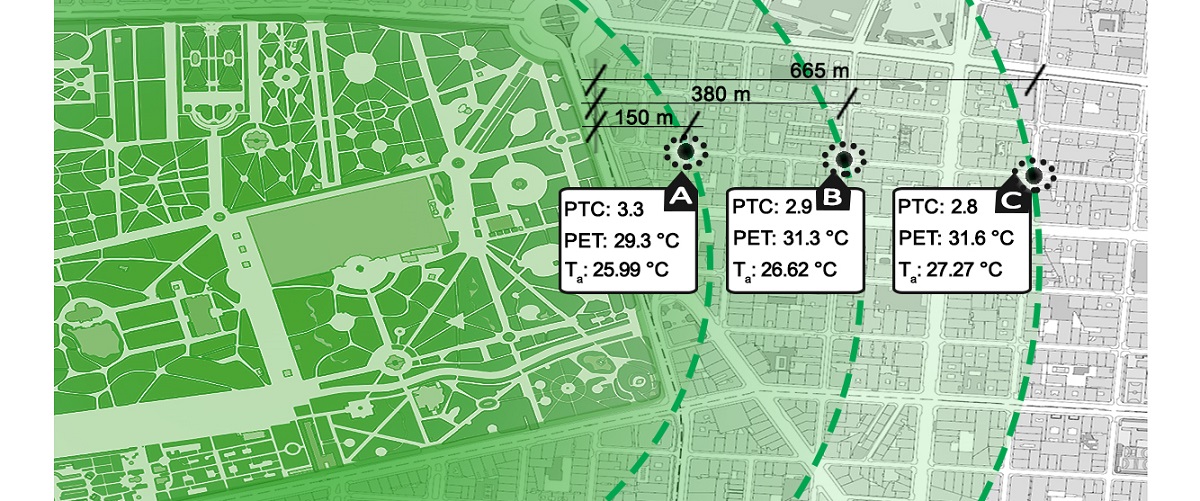This empirical study investigates large urban park cooling effects on the thermal comfort of occupants in the vicinity of the main central park, located in Madrid, Spain. Data were gathered during hot summer days, using mobile observations and a questionnaire. The results showed that the cooling effect of this urban park of 140 ha area at a distance of 150 m is able to reduce temperature by an average of 0.63°C and 1.28°C for distances of 380 m and of 665 meters from the park. Moreover, the degree of the Physiological Equivalent Temperature (PET) index at a distance of 150 meters from the park is on average 2°C PET and 2.3°C PET less compared to distances of 380 m and 665 m, respectively. Considering distance from the park, the correlation between occupant Perceived Thermal Comfort (PTC) and PET is inverse. That is, augmenting the distance from park increases PET, while the extent of PTC reduces accordingly. The correlation between these two factors at the nearest and furthest distances from the park is meaningful (P-value <0/05). The results also showed that large-scale urban parks generally play a significant part in creating a cognitive state of high-perceived thermal comfort spaces for residents.

